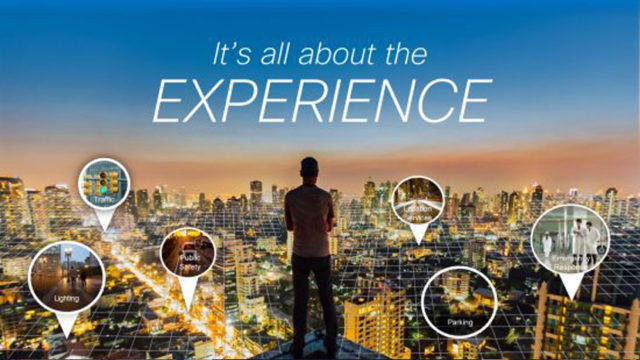
Help Wanted: A Chief Experience Officer for Smart Cities Everywhere
September 7, 2016 — Blog
Airbnb, a key player in the new sharing economy, has recently established the role of Chief Employee Experience Officer who oversees the company’s “workplace as an experience™”—and they’ve even trademarked it—who carefully orchestrates the physical, emotional, intellectual, virtual, and aspirational elements of the work experience to inspire employees. It’s been a big hit with employees, 90% of whom recommend Airbnb as a great place to work, according to an article in Forbes.
According to a 2015 healthcare industry analyst report, that field has established the role of Chief Experience Officer to elevate the patient and family care experience, restore joy to the practice of medicine for practitioners while still being able to reduce overall costs. A huge balancing act to be sure.

What if cities had a similar role? Let’s call it the “Chief City Experience Officer” or CCXO
Imagine having a single individual responsible for creating memorable experiences for residents, visitors, businesses and even city employees…for identifying the important characteristics that make a city unique and seeing to it that the cultural elements necessary to support those characteristics are preserved. Where a Chief Innovation Officer (I’ve seen them called CINOs)—a role that has begun to surface in a number of cities—looks for the new, a CCXO is actually responsible for preserving what’s good about the old. She or he would identify and articulate the culture and soul of her city—its brand, if you will—and see to it that the city builds brand equity by establishing and protecting the very elements that resonate with residents, tourists and local businesses, as well as inspire the employees who run the city agencies and vertical industries to embrace a sense of city pride and reflect it in the way they fulfill their duties and provide services.
A CCXO would need to be able to see across the various city vertical industries – transportation, lighting, water management, parking services, traffic control, etc., to build alliances and create positive experiences on a daily basis.
So how does that jive with the idea of the smart city? A city made more efficient by the use of technology. Well, as surprising as it might sound coming from a technology company executive, creating a smart city is more than just installing a bunch of hardware and software and calling it a day. When it comes to creating sustainable smart cities, we have to understand what makes a city unique, what makes it tick and makes people want to be there, so that becoming smart includes reinforcing and reflecting the city’s uniqueness rather than permitting it to become impersonal, homogenized.
It seems that a number of cities have begun thinking about how to balance the new with the old and I propose that more cities are going to come to this realization soon. It’s really the blend of art and science. And this may not, in fact, be an entirely new role. The same processes and outcomes—overseeing and assuring the urban experience—may already be the province of the mayor. In your city, who is responsible for the urban experience…is there someone?
At the New Cities Summit this week, the theme of Urban Tech prompted many conversations about technology, of course. But we also talked a lot about what else was necessary, in addition to the technology, to create a vibrant smart city. So for instance, there was a lot of discussion about mobility—self-driving cars, bike sharing, public transit, trains and how it all works together. But have we asked why we need to mobilize in the first place. Maybe we can rethink where we need to go and for what purpose—for work, for entertainment, for necessities, for carrying something or someone from one place to another. That perspective might really significantly change the entire mobility equation all together. Is there someone asking these questions and getting the answers they need?
We have to recognize that each city has its own rhythm, and we can’t forget that. If we don’t get that right, then it’s not really a smart city. How do you sense the rhythm and the soul of a city…understand what tourists and residents want…figure out the real starting point from which begin to add technology to support those elements…and in the least invasive way. You have to understand the communities within a city to understand the city.
Helsinki, the capital of Finland, could be on the right track. A city well on its way to creating an open and interactive city, it posted a call to fill a new position: Chief Design Officer. Though not exactly a City Experience Officer, this role would seem to reflect the city’s sensitivity to what it will take to keep a smart city going. They are seeking a professional with strategic expertise in service design, leadership in a broad operational environment and user-oriented development processes, an understanding of the public sector, excellent interaction and negotiation skills, ability to establish cooperation between internal and external stakeholder groups, diverse design knowledge, strong knowledge of international operations and networking and practical experience in change management, who can work in both Finnish and English. (If you think you’re what Helsinki needs, contact them here)
Suppose the role of Chief City Experience Officer existed in your city…what might that look like? Do you think it would make your city an even better place to live and work? I look forward to hearing your views…
This article first appeared in the Cisco Blog on Friday, June 24 2016.